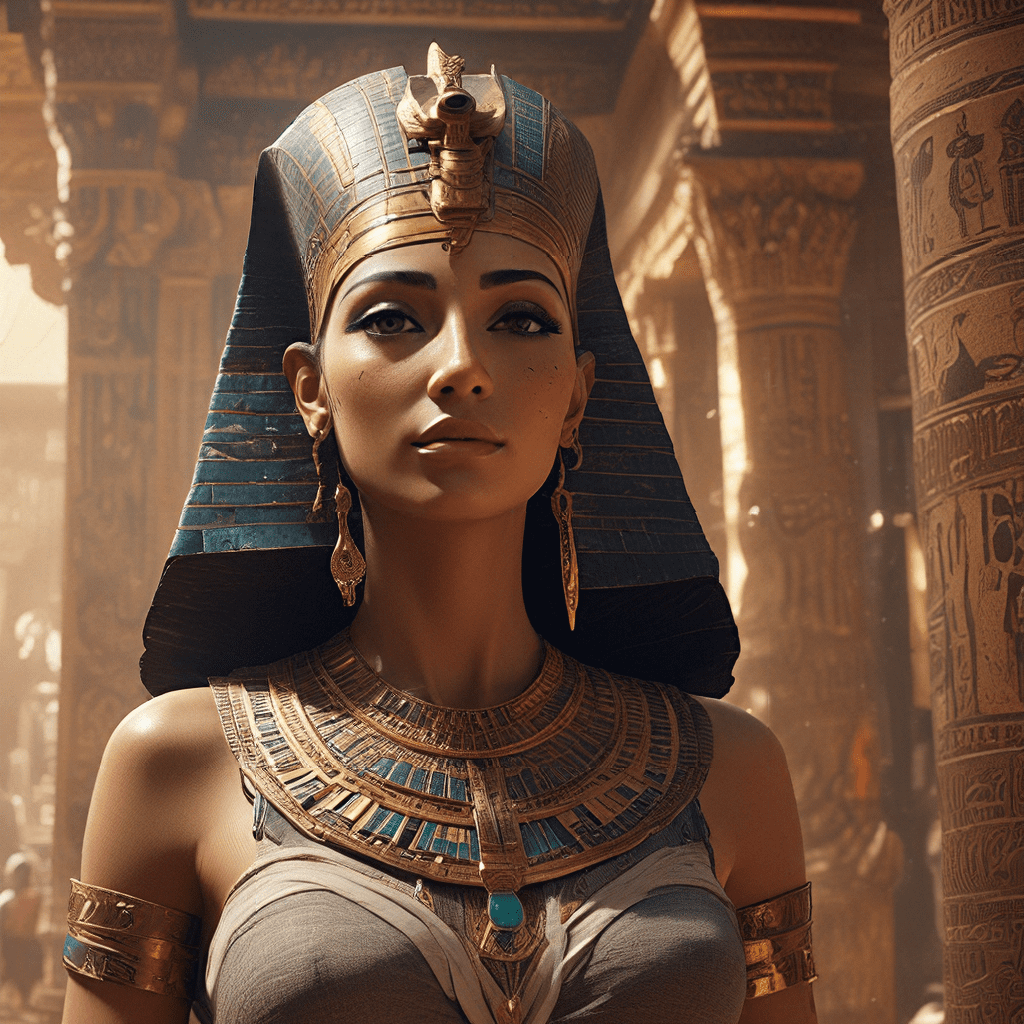The Soul’s Voyage: Exploring the Egyptian Concept of the Afterlife
1. Introduction: The Enduring Mystery of the Afterlife
Throughout history, humans have been fascinated by the mystery of what happens after death. This curiosity has led to diverse beliefs and practices surrounding the afterlife, ranging from reincarnation to eternal oblivion. Among the ancient civilizations, the Egyptians developed a unique and elaborate set of beliefs about the soul’s journey after death. Their system, rooted in complex mythology, rituals, and texts, offers a glimpse into their profound understanding of life, death, and the eternal realm. This article explores the captivating world of the Egyptian afterlife, unveiling the intricate path the soul was believed to traverse.
2. The Ka, Ba, and Akh: Understanding the Soul’s Components
The Egyptians believed that the soul, known as the “ba,” was not a singular entity but comprised of three distinct parts: the Ka, the Ba, and the Akh. The Ka, often depicted as a double of the human being, represented the life force and vital energy, and it remained tethered to the body throughout life. The Ba, symbolized by a bird with a human head, embodied the personality, individuality, and the ability to move freely between the worlds of the living and the dead. The Akh, attained after a successful journey through the afterlife, represented the transformed soul, possessing wisdom, purity, and eternal life. These three aspects of the soul, intertwined and interconnected, worked together to create the complete essence of a human being.
3. The Journey Begins: Death and the Process of Mummification
The Egyptians believed that death was not an end but a transition to the afterlife. The preservation of the body was paramount to their beliefs, as they believed that the Ka needed a physical vessel to return to and unite with the Ba in the afterlife. This led to the intricate practice of mummification, a complex process of preserving the body through dehydration, salting, and wrapping with linen bandages. The mummification ritual was a sacred act, meant to prepare the deceased for the trials and challenges that awaited them in the underworld. The mummified body, along with precious amulets and offerings, were then placed within a sarcophagus and buried in elaborate tombs designed to safeguard the deceased’s journey into the next world.
4. The Weighing of the Heart: Judgment in the Hall of Maat
After death, the deceased soul was believed to embark on a perilous journey through the underworld. The most crucial event along this path was the weighing of the heart ceremony, taking place in the Hall of Maat. Maat, the goddess of truth, justice, and cosmic order, presided over this judgment. The heart, representing the soul’s conscience and moral compass, was weighed against the feather of Maat. The jackal-headed god, Anubis, oversaw the weighing, while the scribe god, Thoth, recorded the results. If the heart weighed less than or equal to the feather, meaning the deceased had led a righteous life, they were permitted to enter the afterlife. However, if the heart was heavier, it was devoured by Ammit, the “devourer of the dead,” sentencing the soul to eternal oblivion.
5. The Trials: Facing the Dangers of the Underworld
The journey through the underworld was fraught with dangers and challenges. The deceased soul faced a series of trials, each guarded by mythical creatures and deities. They encountered the terrifying demoness, Ammit, who devoured souls deemed unworthy. They also navigated the perilous “Field of Fire” guarded by the god Set, the embodiment of chaos and evil. The soul had to appease the goddess Sekhmet, a fearsome lion-headed deity who represented the destructive aspects of the sun. They faced the terrifying serpent-like Apep, who threatened to engulf the sun. Each trial tested the soul’s courage, resilience, and adherence to Maat, ultimately determining their fate in the afterlife.
6. Navigating the Underworld: The Significance of the Book of the Dead
The “Book of the Dead” was a crucial guide for the deceased soul navigating the treacherous underworld. This collection of spells, hymns, and incantations was meant to protect the soul from dangers, appease deities, and ensure a successful journey. It contained chapters that provided instructions for navigating specific trials and spells to ward off malevolent spirits. The Book of the Dead was believed to be a magical tool, empowering the soul to face the challenges of the afterlife with confidence. It served as a lifeline, offering guidance and protection throughout the soul’s journey.
7. The Rewards of the Afterlife: Paradise and the Field of Reeds
For those who successfully passed the tests and achieved a righteous heart, the rewards of the afterlife were profound and eternal. They were welcomed into the “Field of Reeds,” a blissful paradise where they would enjoy a life of abundance, joy, and eternal union with the gods. In this idyllic realm, the soul would be free from pain, suffering, and death, enjoying a life of everlasting peace and contentment. The Field of Reeds was a vision of perfect harmony, a reflection of Maat, where the soul could finally find solace and eternal peace.
8. The Negative Confession: The Importance of Moral Conduct
The Egyptians emphasized the significance of ethical behavior and good deeds in life as a path towards a successful afterlife. They believed that a just and moral life was essential for a favorable judgment in the Hall of Maat. This concept was reflected in the “Negative Confession,” a crucial part of the Book of the Dead. In this declaration, the deceased soul was required to affirm their innocence of negative actions and transgressions, declaring their adherence to Maat and their commitment to righteousness. The Negative Confession served as a powerful testament to the importance of ethical living in achieving a prosperous afterlife, illuminating the Egyptians’ belief in the interconnectedness of life, morality, and the eternal realm.




